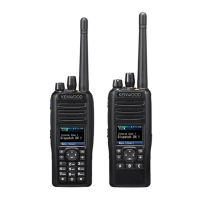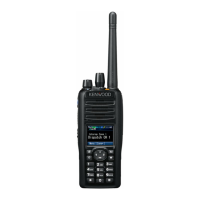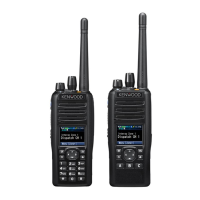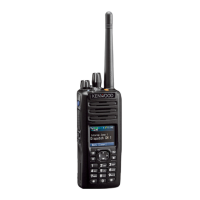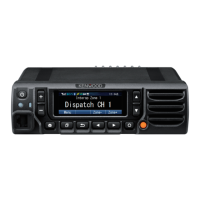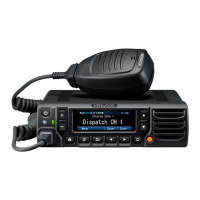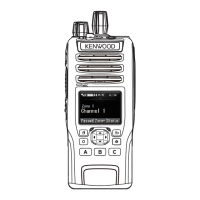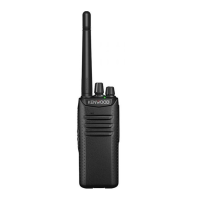Avoiding Interference with Other Communications (Busy Channel Lockout (DMR))
Busy Channel Lockout is the function to automatically restrict the transmission so as not to interfere with other
communications.
If an attempt is made to transmit on a channel that is already being used by other groups, the transceiver automatically
restricts the transmission.
If the PTT
switch is pressed while Busy Channel Lockout is enabled, a Warning Tone A (continuous beep) sounds from
the transceiver, and transmission is disabled. In this case, “BUSY” appears on the display. The Warning Tone A sounds
from the transceiver until the PTT switch is released.
The following are conditions to disable transmission by Busy Channel Lockout (DMR):
Table 1-2 Busy Channel Lockout (DMR)
Configuration Description
No
Busy Channel Lockout is disabled. Transmission is not restricted even if the channel on which
the transceiver attempts to transmit is busy.
Carrier Only The transceiver cannot transmit while the transceiver is receiving a carrier.
Correct CC
The transceiver cannot transmit if the transceiver receives a carrier and the received Color Code
matches the Color Code preconfigured for the transceiver.
The transceiver is controlled in the following manner according to the configuration in Transmit Mode on a channel with
“Mixed” configured in Channel Type.
0
If “Analog” is configured for Transmit Mode:
The transceiver transmits according to the configuration in Busy Channel Lockout (Analog).
0
If “DMR” is configured for Transmit Mode:
The transceiver transmits according to the configuration in Busy Channel Lockout (DMR) and In-call Busy Channel
Lockout.
Also,
while the Signaling Reset Timer or Auto Reset Timer is activated on a channel with “Mixed” configured in Channel
Type, the transceiver transmits according to the configuration in Busy Channel Lockout in the same mode as that of the
received signal (Analog or DMR). If the transceiver receives an analog signal, the transceiver transmits according to the
configuration in Busy Channel Lockout (Analog). If the transceiver receives a DMR signal, the transceiver transmits
according to the configuration in Busy Channel Lockout (DMR) and In-call Busy Channel Lockout.
In-call Busy Channel Lockout is used for configuration when audio output is possible during an incoming voice call.
The following are conditions for transmission and reception using In-call Busy Channel Lockout:
Table 1-3 In-call Busy Channel Lockout
Configuration Description
Allow TX
During a voice call, pressing the PTT switch disables all transmission restrictions regardless of
the configuration of Busy Channel Lockout (DMR). However, Busy Channel Lockout will
function
when “Carrier Only” or “Correct CC” is configured for Busy Channel Lockout (DMR) and
is in the following state.
0
When a different voice call is initiated during an incoming voice call
0
When a voice call with a different ID is initiated during an incoming voice call
Follow BCL
During a voice call, pressing the PTT
switch enables restriction on the transmission according to
the configuration of Busy Channel Lockout (DMR).
Interrupt CALL
The receiving call can be terminated by pressing the PTT switch to respond (Talkback) while
receiving an Individual Call or Group Call to one’s own station or when receiving an Unaddressed
Call. (Refer to Terminating Voice Communications by a Transceiver Other Than the Transmitting
Transceiver (Call Interruption).)
1 DMR CONVENTIONAL SYSTEM
1.1 Initiating Voice Communications (Basic Transmission and Reception)
DMR FUNC (K, F)/Ver 2.20 7
CONTENTS INDEX
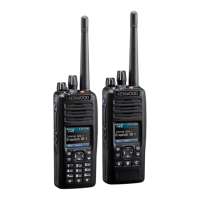
